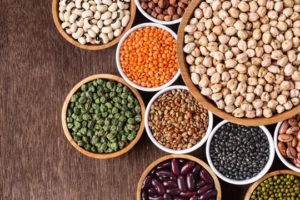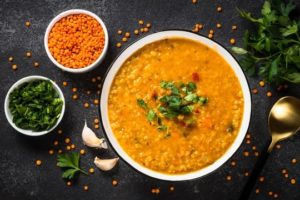How does one explain the fascination of Indians for dals? Is there a common strain in the dals across the country?
“Dals are a diverse and versatile ingredient that can be found in different cuisines around the world. Dals are an integral part of Indian cuisine. Each region, according to its taste and availability of ingredients, makes dal by adding fish, meat, coconut milk, cream, vegetables and a host of aromatic spices. All this results in spicy and tantalising preparations across the states,” says Pratibha Karan, an IAS officer of the 1967 batch and retired as Secretary, Ministry of Food Processing Industries in 2003 of her third book “The Book of Dals” (Penguin Random House India).
“So with the rock like support from my family, the enthusiasm of my grandson Azaan to whom the book is dedicated and the constant nudging by our friend Peter Burleigh, the former US Ambassador, the book became real,” Karan who is married to Vijay Karan, a former Delhi Police Commissioner, told IANS in an interview.
In “The Book of Dals”, Karan takes you on an incredible journey to different regions of the country and shows how locally available spices and herbs, vegetables and fruit impact the food of that region. The variety of dals and dal-based dishes that you can make with these are phenomenal and mind-boggling.
This book offers many varieties of beautiful, fragrant and beguiling dals that will have anyone savouring them in raptures.
From southern India, you will find Telangana Sambar, Khatti Dal and Dalcha with vegetables and meat. They are made using delicious combinations of chillies, pepper, tamarind, cloves, cardamom, coconut, curry leaves and drumsticks. It also has recipes such as Kootu from Tamil Nadu and the famous Bisi Bele Huliyana from Karnataka.
You will also find lentils in coconut milk, Katachi Amti and Moong Sprouts from Maharashtra, and Dhansak, a Parsi dish, from Gujarat in western India. Dals from eastern India such as Chana Dal Bengali-style and Assamese Mati Maa are included. From northern India, Delhi Rajma and Punjabi Dal Makhani find a place in the book.
This book is not limited by borders. It includes exotic dal recipes from the neighbouring countries like Nepal and Sri Lanka, and some delicious and wholesome dal-based soups too.
Karan has earned tremendous accolades for her culinary skills. How did the cooking ‘bug’ bite her and how did she balance this skill with her role in the civil service?

“All children are indulged in their parents’ home. So was I. We would demand food whatever time of the day or night. My mother would seize upon the most immediately available ingredients and it would work gloriously. Even when young I had a natural interest in cooking.
“I am a vegetarian. My husband Vijay Karan, who is from Hyderabad, is a hard core non-vegetarian. His passion for non-vegetarian food made me search for exotic, unusual, and tasty recipes, especially during our postings and travels to different parts of India and abroad. I held many different assignments during my service and many threw challenges. It was fascinating to deal with them and I faced them with hard work and tenacity.
“During my visits to Hyderabad, which were frequent after I married Vijay Karan, I plunged deep into the world of Hyderabadi cuisine. Hyderabadi food is a mix of several influences, but with a compelling identity all its own. Hyderabadi food is not just Biryani and Baghare Baingan, Mirchi Ka Salan and Tomato cut. The repertoire is rich and vast in both vegetarian and non-vegetarian food,” Karan elaborated.
Elaborating on the addition to her knowledge during her various postings, she said: “Yes, I did learn a lot during my postings and travels. I would ask any one and every one wherever we went, the relatives, cooks and chefs in five-star hotels or people cooking on road side dhabas. The response was always positive and added phenomenally to my knowledge.
“During one of our visits to Kerala, we stayed at Kumarakom Lake Resort — a popular tourist destination and famous for its scenic backwaters. While cruising on the backwaters we came across a two roomed hut with a beckoning sign that read ‘Hawai’. A garden umbrella was perched in front, with a coarse wooden table and four chairs.
“Our curiosity aroused, we plonked ourselves at the place. There was a husband and wife team that cooked jumbo prawns right in front of us. My family gorged on the delicious prawns that the couple cooked and served. They shared the recipe with me that was simple. We frequently make those prawns.
“During my posting in Puducherry and my travels to the surrounding states of South, I was exposed to the fascinating South Indian cuisine. It was not just Idli, Sambhar, Vada and Dosa but I also learnt about Apam, Stew, Payasam, Kootu, Telangana, Sambhar and more,” Karan said.
Considerable research went into the book in the journey from conception to completion.
“It was on account of my intense exposure to Hyderabadi cuisine and acquiring a good knowledge of it that my husband asked and encouraged me to write a book on Hyderabadi cuisine. This resulted in my writing the first book ‘A Princely Legacy Hyderabadi Cuisine’.
“Again, it was Random House which approached me to write a book on Biryani. While I was thinking about the offer, my husband said ‘What are you thinking about? Just say yes’. I accepted the offer and then wrote the book ‘Biryani’ which has 100 Biryani recipes from across the country. After my last book Biryani, my family urged me to write the third book on dals as dals are an intrinsic part of everyday meals in all Indian homes, including ours.”
The government is vigorously pushing for millets. What is her take on this?
Karan replied: “Now, millets have been cultivated for thousands of years as a staple food in many parts of the world including India. Millets are well adapted to grow in harsh conditions. However, with the green revolution and subsequent emphasis on high yielding crops, like wheat and rice, millets fell out of favour and their cultivation declined.
“Millets are highly nutritious, rich in fibre, protein, vitamins and minerals making them an important source of food and nutrition. A boost to the production of millets has the potential to not only improve the nutrition and health of millions of people but also to promote sustainable agriculture and support the livelihood of small farmers in dry land areas.
“The initiatives launched by the government are only commendable.”
What next? What’s her next book going to be on?
“As to the question, what next? What’s my next book going to be? That’s a million dollar question,” Karan concluded enigmatically. (IANSlife)



